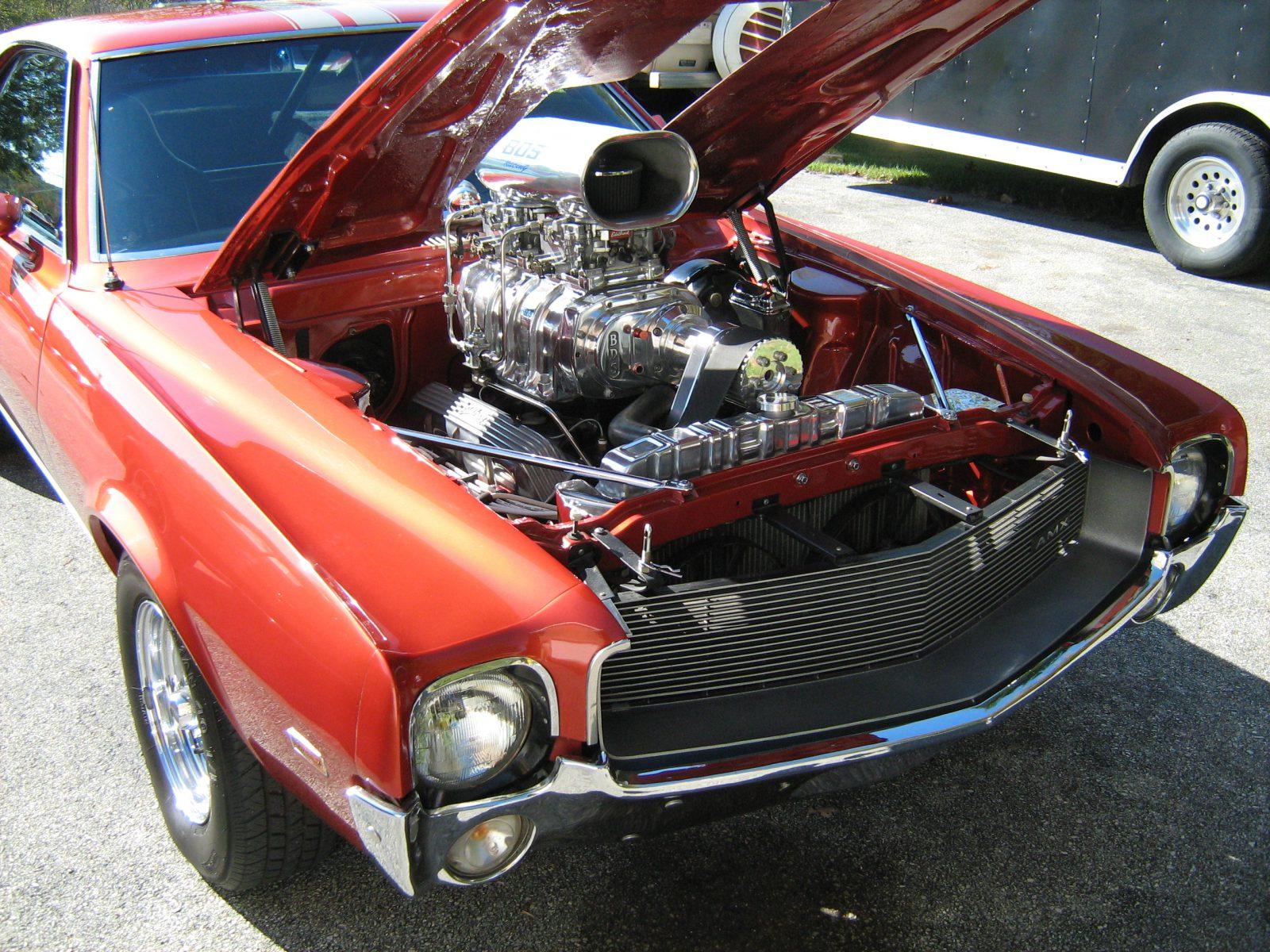Both car drivers and manufacturers care about power. Ever since the age of the modern internal combustion engine, engineers have been seeking ways to boost an engine’s power.
“Supercharger”, a common car term you will definitely come across, is a device that does just this. What is it and how does a supercharger work?
A turbocharger is another device designed for the same purpose. Read on to understand this important component in your vehicle: how does a supercharger work, and how does a supercharger compare to a turbocharger.
Contents
How does a combustion engine work and how to make it more powerful?
To answer “how does a supercharger work?” in making a car’s engine more powerful, first you should understand how a combustion engine works.
The combustion engine generates energy for the car to run with the input being a mixture of air and fuel.
Air and fuel of a certain ratio enter the combustion chamber of the engine and are compressed and ignited to create a combustion, or an explosion.
This combustion generates energy, which the engine sends to all necessary parts to get the car running. This is why the modern engine is called an “internal combustion engine”.
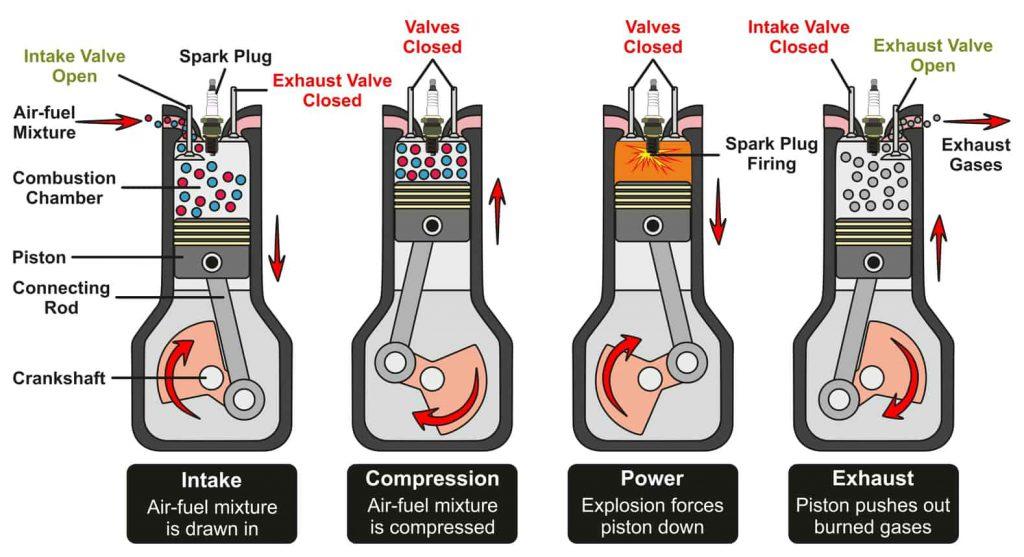
It can be seen that air plays a vital part in the energy creation process. The rate of airflow into the engine chamber affects how much energy can be created, that is it affects how powerful the engine is.
Forcing more air into the combustion engine makes it more efficient and a supercharger is created for this purpose.
This method is more ideal in boosting an engine’s power compared to making the engine bigger, which will make the car heavier and much more bulky.
READ MORE:
- Engine Vacuum, Vacuum Leak and How To Find It?
- Revealed: The Top Audi Engines For Excellent Performance
How Does a Supercharger Work?
To help the engine generate more power, two things are needed: more air and more fuel sucked into the engine’s combustion chamber.
It should be noted that a specific ratio is required for the engine to work: 14 parts air to one part fuel.
The air pumped into the combustion chamber is regular air at atmospheric pressure. The compressing happens later with the working of the piston, which moves up to compress the air and fuel mixture, thereby creating a “vacuum”.
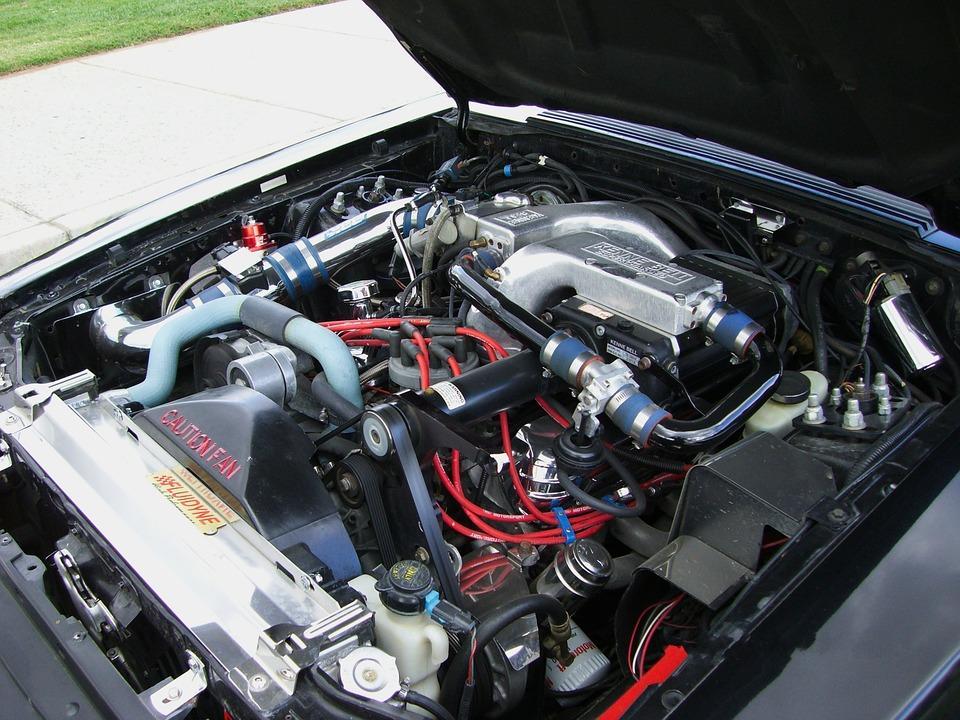
The supercharger increases air intake simply by compressing air at above atmospheric pressure before pumping into the combustion chamber.
With more air intake, more fuel can be pumped into the combustion chamber for the engine to combust to create more energy.
A supercharger can add an average of 46 percent more horsepower, the measurement we’re all familiar with, and 31 percent more torque, a car’s rotational or twisting power (as opposed to linear power like a push or a pull).
How air is treated by a supercharger
After the air is compressed by the supercharger, it gets hotter and thus becomes less dense. This means it cannot expand as much during the combustion occurred in the engine’s combustion chamber, after the spark plug in the chamber ignites.
Therefore, for the supercharger to create the optimal air so that the engine can generate the most power, the compressed air exiting the supercharger must be cooled down before it enters the engine via the intake manifold.
Parts of a supercharger and what they do
The supercharger is connected to the engine’s crankshaft, a rotating shaft connected to the engine’s pistons, by an accessory belt. This belt in turn is wrapped around the pulley. Power is drawn from the crankshaft via the accessory belt to rotate the pulley.
This makes the drive gear, which is connected to the pulley, rotate. The drive gear, in turn, rotates the compressor gear.
This compressor gear compresses air and then cooled by the intercooler to increase the air’s density. The compressed, dense air is then released into the intake manifold of the engine.
There are two types of intercoolers: air-to-air and air-to-water. Cooler air or water is run through a system of tubes. The heated compressed air will cool down after being in contact with these cooler tubes.
Types of Supercharger
There are three types of supercharger, which differ in the way they discharge air into the engine’s intake manifold.
Depending on how much power boost you want to give your car, you can choose among different sizes of each type of superchargers.
Roots
The Roots supercharger is the oldest design, which was dated back to 1860 and named after its inventors, Philander and Francis Roots.
Roots superchargers are technically air blowers. Air flows into the supercharger and is trapped in a system of meshing lobes.
The meshing lobes spin to “stack up” the air against the engine’s intake manifold to compress it, which then moves into the intake manifold.
Due to this design of meshing lobes, a Roots supercharger is big and heavy, and will stick out of the hood of a car.
This design also makes it the least efficient, as the process cannot create a continuous flow of compressed and dense air into the engine.
The way the air is “stacked up” against the engine’s intake manifold by the spinning of the meshing lobes to create extra pressure only creates discrete bursts of air.
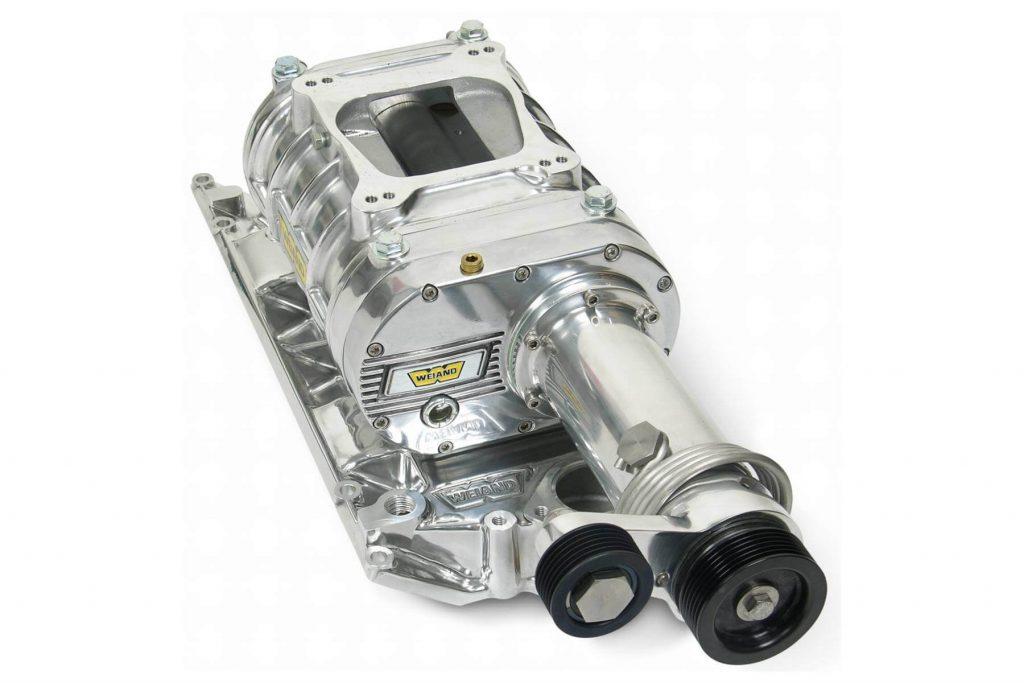
Twin-screw
A twin-screw supercharger pulls air in through a pair of meshing lobes that resemble a set of worm gears. This set is designed and manufactured with precision and is more complex than a Roots supercharger’s meshing lobes.
Air is compressed inside a twin-screw supercharger, thus it is evidently more efficient than the Roots as it can provide a continuous flow of compressed air into the engine. Due to its design, it is much more expensive to manufacture.
Centrifugal
A centrifugal supercharger rotates an impeller at very high speeds, up to 50,000 to 60,000 RPM, to suck air into a small compressor housing. It is designed with extra parts that better ensures that air is compressed effectively and reliably.
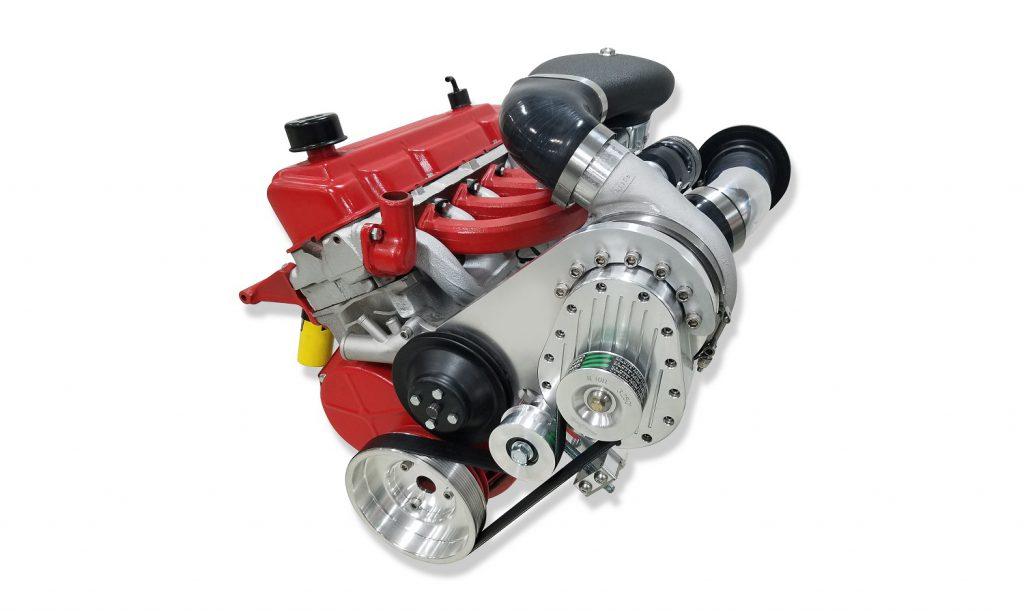
Centrifugal superchargers are by far the most efficient. They are also smaller and light weight, plus they sit in front of an engine so they don’t stick out of the hood. These advantages make them the most commonly used supercharger.
Supercharger vs Turbocharger
The turbocharger does the same job as the supercharger. In fact, “turbocharger” or “turbo” are actually short for “turbo-supercharger”. How are they different?
The main difference lies in where they get power from to function. A supercharger draws power from the car engine’s crankshaft to power the compressor while a turbocharger draws power from the exhaust gasses created by the combustion in the engine’s chamber.
In other words, a turbocharger is not directly connected to the engine. This difference creates the gap in their spinning speed. Superchargers will spin with speeds up to 50,000 RPM or rotations per minute.
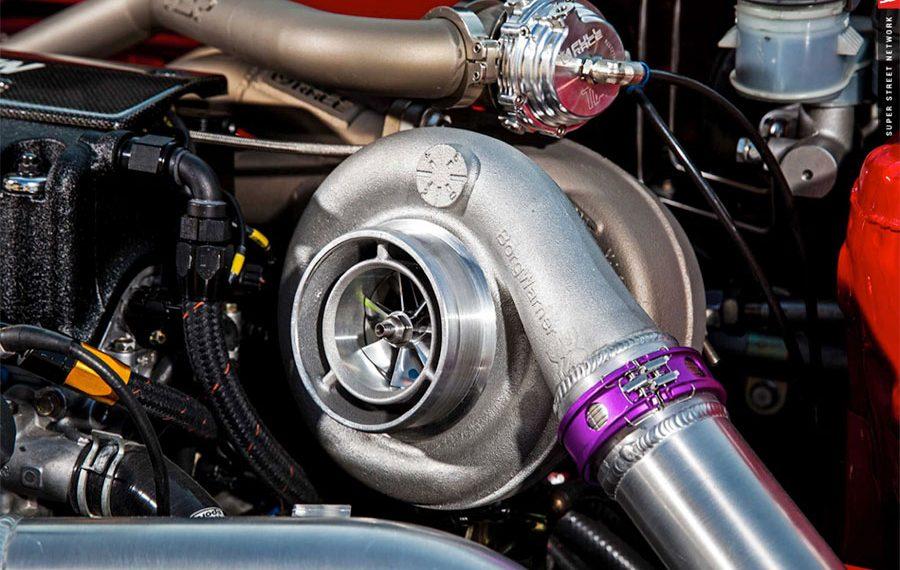
Turbochargers can spin much faster as their speed doesn’t rely on the movement of the engine’s crankshaft. They can reach as much as 150,000 RPM, or three times as fast as superchargers.
Another difference that makes a turbo more environmentally friendly than a supercharger is that a turbo has an altering equipment that lowers the carbon emission of discharges.
In general, a turbo is quieter. However, a supercharger is less complex, which makes it in a way more stable and maintenance will be easier.
READ MORE: Why You Should Never Stop Turbocharged Engines After Driving?
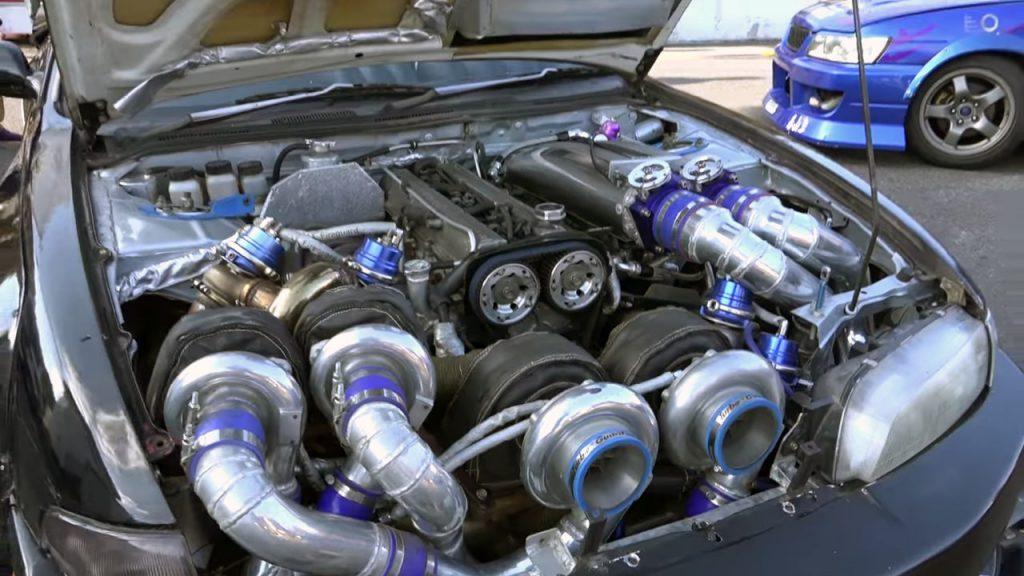
Now that you’ve learned what you must know about the basics of your car’s engine and how a supercharger works, want to learn more about your car’s engine and how to keep it in top shape?
You might be interested in our guide “High mileage oil for car engines: is it worth the extra cost?” and useful maintenance tips from our comprehensive library.

